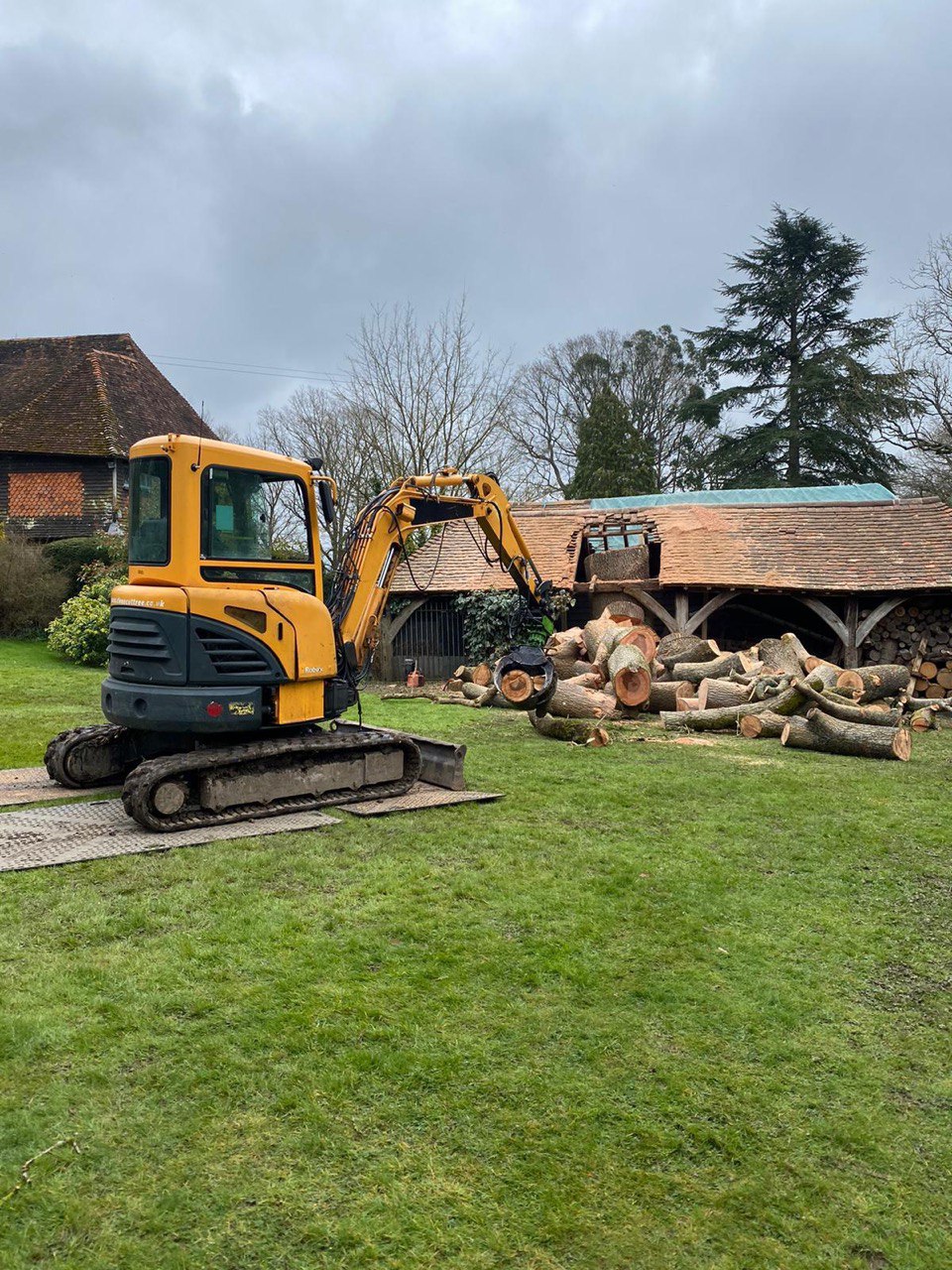Introduction: Invasive tree species can be a persistent challenge for homeowners and property managers. These non-native trees tend to grow rapidly, outcompeting native vegetation and disrupting the balance of local ecosystems. While removing the visible parts of invasive trees is crucial, what happens below the ground is equally important. In this blog post, we’ll explore the role of stump grinding in managing the growth of invasive tree species and restoring the health of your landscape.

Understanding Invasive Tree Species:
Invasive tree species are typically non-native plants introduced to a new environment, often unintentionally. These trees are aggressive in their growth and can quickly dominate an area, outcompeting native plants for resources like sunlight, water, and nutrients. Common invasive tree species include Tree of Heaven (Ailanthus altissima), Norway Maple (Acer platanoides), and Princess Tree (Paulownia tomentosa), among others.
The Hidden Challenge: Root Systems and Stumps:
When dealing with invasive trees, it’s not enough to focus solely on removing the visible parts of the tree. The root system, which extends underground, can continue to produce new growth even after the tree is cut down. This persistent root growth can be frustrating and counterproductive.
The Role of Stump Grinding:
Stump grinding is a critical step in effectively managing invasive tree species. Here’s how it can help:
- Complete Eradication:
Stump grinding goes below the surface to remove the entire root system, eradicating the invasive tree. This prevents regrowth and minimises the risk of the tree spreading.
- Resource Competition Reduction:
By eliminating the root system, stump grinding reduces resource competition between invasive trees and native plants. This allows native vegetation to thrive and restore balance to the ecosystem.
- Aesthetic Improvement:
Invasive trees can be invasive in more ways than one—they can disrupt the aesthetics of your landscape. Stump grinding leaves your outdoor space looking clean, neat, and free from the eyesore of tree stumps.
- Prevention of Spread:
Invasive trees can produce seeds that spread and contribute to further infestations. Removing the stumps helps prevent the spread of these problematic species to other areas of your property or neighbouring properties.
Professional Expertise:
Stump grinding is a specialised process that requires professional expertise and equipment. While attempting it as a DIY project may be tempting, hiring a tree service provider with experience managing invasive species is the most effective and safe approach.
Conclusion: Invasive tree species can pose a significant threat to the health and balance of your landscape. While removing the above-ground growth is essential, addressing the root system through stump grinding is equally crucial. By eradicating the stump and roots, you can effectively manage the development of invasive trees, restore the health of your landscape, and prevent further spread.
Call us on: 01424 619092
Click here to find out more about Hastings Tree Care
Click here to complete our contact form and see how we can help with your tree’s needs.